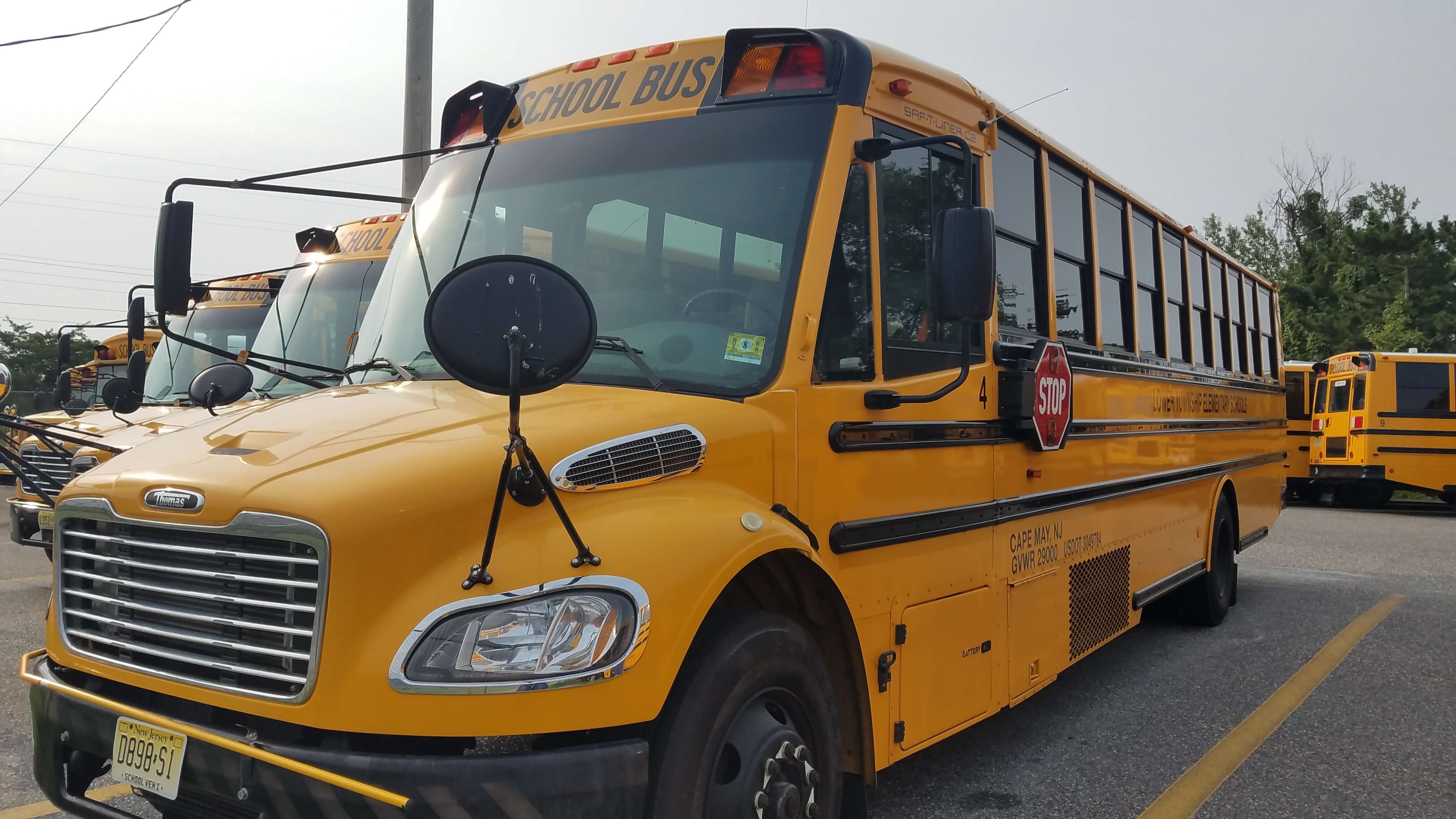COLD SPRING – Everyone’s probably heard the familiar trope that their parents or grandparents would tell them: They had to “walk 15 miles to school in the snow! Barefoot! Uphill both ways!” The speaker would criticize young people for having things easy compared to the hardships of the past.
When today’s school children get their chance to rant “When I was your age…” they are likely to remember their parents tracking the school bus’s whereabouts on an app, the driver hearing directions from his or her tablet, and walking maybe 300 feet to get picked up.
With school starting after Labor Day, school district transportation supervisors, including those at Lower Township Elementary and Lower Cape May Regional school districts, are finalizing routes, times, staff and buses to ensure students get picked up in as smooth a fashion as possible.
Transportation Supervisor Kelly Hewitt “loves her job because the challenges every day are different.”
Overseeing 17 drivers with the Lower Township Elementary School District, this coming school year is particularly challenging because the district will learn Aug. 31 if the state Education Department will approve a proposal to expand its pre-school program.
To be prepared, Hewitt has to plan routes if the proposal is approved and other routes if the proposal is not approved.
A parents’ meeting Aug. 23 was intended to let them know what to expect.
Another exciting aspect Hewitt is overseeing this year is the adoption of a new app called, “Here comes the bus,” which will allow parents to view the real-time location of their children’s bus on their smartphone, tablet or computer.
“Parents will be able to download the app for free and see the location of the bus before and after school,” Hewitt said. “They will be able to confirm that their child’s bus has arrived at the bus stop, at school or both. They also can receive a push notification or email message when the bus is near their stop, has been substituted or when we have important information to relay.”
The app is available in English, Spanish and French.
Tracking a child’s school bus has become more important over time, and this year the buses will also have live GPS (global positioning system) so Hewitt will know more easily if a stop is missed, a bus is speeding or in an accident.
All 23 district buses also will be equipped with computer tablets that will provide audio directions; the screen shuts off once the bus goes more than 5 mph so drivers can keep their eyes on the road.
“The directions are really important if we have a sub who doesn’t know the route,” she noted. “The GPS protects the drivers, parents, everyone. Now if someone calls to say their stop was missed, we will know exactly what happened.”
Lower Township Elementary School District buses 1,725 pre-K through sixth-grade students, according to Hewitt. They are picked up in an area that ranges from the Cape May County Park-Zoo to Villas, the Wildwoods, and Cape May.
They have two Choice runs because the “home” district is responsible for transportation if students go to another Choice school.
At Lower Cape May Regional, Transportation Supervisor Joe Battle and his staff have been preparing about 40 buses to transport about 1,500 seventh through 12th graders.
In his 40th year in the department, he oversees about 30 drivers who take the students to Wildwood Catholic, Cape Trinity, Cape May County Technical School and Cape May County Special Services, as well as the middle and high schools.
In addition, busing for extra-curricular activities, field trips for the Cape May and West Cape May elementary schools, and community service needs such as the Jazz Festival require juggling of schedules and drivers.
“Our runs start as early as 6:30 a.m.,” noted Battle, “and a day can end at midnight if it’s a sports event.”
Both Hewitt and Battle said most routes stay the same year-to-year; however, stops can change if a student no longer needs to be picked up.
Hewitt noted they plan stops about every 300 feet in some cases, but not every driveway. Because of safety concerns, children are not allowed to ride their bicycles to school.
While Battle noted “little kids can’t sit still,” he said the “older kids will sometimes challenge a driver. If there is a problem, verbal and written notices are given before a student is removed from a bus.”
Cameras on the buses also provide proof if problems occur.
In addition, all students are supposed to wear a seatbelt; however, they can’t be forced. “The drivers listen for the click,” Hewitt added, “and if they don’t hear it, they’ll ask the student to buckle up, but that’s all they can do.”
Following the fatal Paramus school bus crash that killed a middle school student and teacher earlier this year, efforts are being made to ramp up school bus safety in the Garden State.
The state Senate Transportation Committee is looking at having monitors on all buses to watch students, increasing the flow of information about a bus driver’s safety record and requiring drivers to be certified more frequently.
Already statewide, there is a shortage of drivers. Lower Township Schools Superintendent Jeff Samaniego said his district is no exception.
Most of his drivers have been driving for about three years. Both Hewitt and Battle, and their staffs, are licensed bus drivers who help when needed.
“All we look for in a driver is that they are happy and care about their job,” Hewitt said. “The tests for a bus driver are very difficult to pass, plus they are drug-tested, which is a problem for some people. I really think our pay is not an issue.
“You have to like driving,” she added. “You’re the first from the school to greet a student in the morning and the last at the end of the day.”
To contact Karen Knight, email kknight@cmcherald.com.








